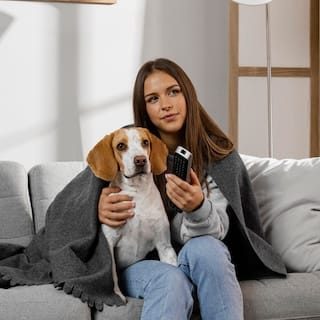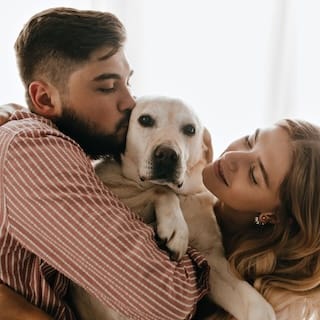
Our homes harbor various hidden dangers that can pose significant threats to our pets. From toxic foods to choking hazards, it's essential to identify these risks and take proactive measures to mitigate them. Common household hazards include toxic plants, human medications, chocolate, small objects that can be swallowed, and even open toilet bowls. Educating yourself about these potential dangers is the first step in creating a safe environment for your pets.
The Hidden Dangers at Home: Common Household Hazards for Pets
It's important to secure potential hazards such as dangling cords, toxic cleaning supplies, and small items that can be ingested. Additionally, investing in pet-friendly houseplants and using pet-proof trash cans can further minimize risks.
Pets, especially puppies and kittens, explore the world with their mouths. This innate behavior often leads to unwanted chewing on household items, posing both a danger to the pet and damage to personal belongings. To protect both your possessions and your pets, it's crucial to implement chew proofing measures.
Chew Proofing Essentials: Protecting Your Belongings and Your Pet
Using bitter apple spray or other pet-safe deterrents on furniture legs and electrical cords can discourage destructive chewing. Providing appropriate chew toys and bones offers pets an alternative outlet for their chewing instincts. Consistent training and positive reinforcement also play a vital role in redirecting their behavior towards acceptable items.
The beauty of indoor plants can enhance the aesthetic appeal of any living space. However, many common houseplants can be toxic to pets if ingested. It's imperative to be discerning about the greenery you bring into your home to ensure the safety of your furry companions.
Plant Safety for Pets: Which Green Friends Are Foe?
Plants such as lilies, aloe vera, jade plant, and certain species of ivy are hazardous to pets if consumed. Opt for pet-friendly plants like spider plants, Boston ferns, and bamboo palms which are not harmful to animals even if ingested.
Creating designated safe spaces within your home is crucial, especially for pets that experience anxiety or stress. These secure spaces provide a retreat where your pets can feel calm and relaxed when faced with unfamiliar situations or loud noises.
Designate quiet areas with comfortable bedding and familiar toys where your pet can seek solace when feeling overwhelmed. Providing hiding spots or cozy enclosed beds can offer anxious pets a sense of security during thunderstorms or fireworks displays.
Secure Spaces: Designing a Comfort Zone for Anxiety-Prone Pets
Electrical cords pose a significant risk to pets who may chew on them out of curiosity or boredom. To prevent accidents and potential electric shocks, it's essential to secure all cords out of reach and employ cord protectors when necessary.
Investing in cord concealers or spiral wrap tubing can effectively safeguard electrical cords from probing paws and curious mouths. Ensuring that plugs are securely inserted into outlets and using cordless window coverings further reduces potential electrical hazards for pets.
Electrical Safety: Guarding Against Shock and Chewing Hazards
Windows are a source of fascination for many pets as they provide views of the outside world and allow natural light into the home. However, unscreened windows pose fall risks while unsecured openings may enable escape attempts by curious or excited pets.
Installing sturdy screens on windows prevents accidental falls or jumps while ensuring proper ventilation. Additionally, supervising open windows or utilizing window stops can safeguard against potential escapes or accidents caused by unsecured openings.
Window Wisdom: Ensuring Safe Views and Ventilation
Being prepared for unexpected emergencies is paramount for all pet owners. A well-equipped pet first aid kit is an indispensable resource in providing immediate care until professional help can be sought in case of injuries or sudden illnesses.
A comprehensive pet first aid kit should include items such as gauze pads, adhesive tape, antiseptic wipes, digital rectal thermometer, tweezers, muzzle, latex gloves, and contact information for emergency veterinary services. Familiarize yourself with basic first aid techniques such as CPR for pets to be better equipped in times of crisis.
Frequently Asked Questions
Common household hazards for pets include toxic plants, human medications, chocolate, and small objects that can be swallowed. Open toilet bowls also pose risks. To create a safe environment, it's essential to identify these dangers and take proactive measures, such as securing cords and using pet-friendly products.
To protect your belongings from chewing pets, use bitter apple spray or other pet-safe deterrents on furniture and cords. Providing appropriate chew toys and bones can redirect their chewing instincts. Consistent training and positive reinforcement are also vital in guiding pets towards acceptable items.
A comprehensive pet first aid kit should include gauze pads, adhesive tape, antiseptic wipes, a digital thermometer, tweezers, a muzzle, latex gloves, and emergency veterinary contact information. Familiarizing yourself with basic first aid techniques like CPR for pets is also crucial for effective emergency response.






